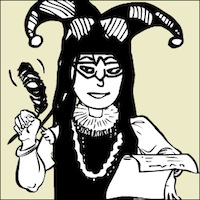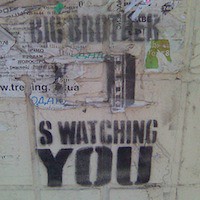Assassination of Malcolm X - February 21, 1965

The week prior to February 21, 1965, had been a difficult one for the Muslim minister-turned Civil Rights Activist. On February 14th—a day commonly celebrated as a day of love—an unidentified person or persons threw several Molotov cocktails into the family’s living room. Malcolm and his wife Betty quickly rushed their four children onto their lawn and watched in terror as their house burned. The attackers were never identified or apprehended.
The Audubon Ballroom held 400 followers of Islam the afternoon of February 21, 1965. Among those in attendance, several members of the NOI—Nation of Islam—known and rumored to be resentful of what they thought was Malcolm’s attempt to supplant Elija Muhammad, the leader.
Malcolm and his family nervously waited in an anteroom. Finally, he sent his pregnant wife and four children to their seats in the audience. Brother Benjamin delivered his introduction, and Malcolm anxiously waited backstage. When it came time for him to speak, he calmly walked onto the stage to a long ovation. As the crowd died down, he greeted them with the standard Muslim greeting; he smiled as they responded in kind.
Unfortunately, Malcolm never had the opportunity to deliver his speech. Two men in the back of the auditorium leapt from their chairs and into a minor altercation with each other. Malcolm tried to calm them, but an explosion not only alarmed the crowd, but distracted Malcolm’s bodyguards—exactly as it had been planned. With the guards distracted, a man in the front row stood and produced a sawed off shot gun, firing two shots through the podium and into Malcolm X’s chest. As he fell to the floor, two more gunman began to fire pistols at him.
Only one suspect was ever apprehended—Talmadge Hayer, aka Thomas Hagan. He was shot in the leg as he attempted to flee the scene, and brutalized by the frantic mob before taken away to the hospital by police.
Those, dear readers, are the facts. From there, it seems, Malcolm X’s death became more of a mystery—not unlike the Kennedy Assassination. Many discrepancies began to surface in the days, weeks, and months after the assassination. Other suspects were named, but quickly written off. The murder weapons were partially recovered (the sawed-off shotgun was found on the premises; the .45 caliber pistol was given to the FBI by an NOI enforcer who had found it, taken it home, cleaned it, then turned it in; the 9mm Luger was never recovered. Theories arose rather quickly, naming everyone from the secretive BOSS (Bureau of Special Services) to members of the NOI to a special program referred to as “Cointelpro” (COunter-INTELligence PROgram).
To add more mystery to the sensational assassination, Karl Evanzz published a well-researched book about the assassination. In the introduction, he stated that a source of his, Louis E. Lomax, “had practically solved the riddle of his assassination.” 1 Lomax later died in an automobile accident—due to brake failure.
Many more mysteries and double-speak surrounded the death of Malcolm X—an African-American who once had dreams of becoming a lawyer, but was told those dreams were too lofty for a black man. He dropped out of school, then spent his time working and trying to learn from the educated black men he’d meet at his various jobs. Racism played a huge part in his life—his father dying at the hands of what many believed a racist attack. Martin Luther King, Jr. had a dream—one based on peace and brotherhood. Malcolm X’s dream began as one based on hate and anger, but eventually turned to peace and respect. King fought for the equality of Americans--all Americans. Malcolm X fought for the equality of all of humanity.
Research Source: The Crime Library
For more information on Malcolm X, please visit the following sites:
Wikipedia
The Assassination of Malcolm X
The Smoking Gun
CBS Video Archive
Democracy Now
The Audubon Ballroom held 400 followers of Islam the afternoon of February 21, 1965. Among those in attendance, several members of the NOI—Nation of Islam—known and rumored to be resentful of what they thought was Malcolm’s attempt to supplant Elija Muhammad, the leader.
Malcolm and his family nervously waited in an anteroom. Finally, he sent his pregnant wife and four children to their seats in the audience. Brother Benjamin delivered his introduction, and Malcolm anxiously waited backstage. When it came time for him to speak, he calmly walked onto the stage to a long ovation. As the crowd died down, he greeted them with the standard Muslim greeting; he smiled as they responded in kind.
Unfortunately, Malcolm never had the opportunity to deliver his speech. Two men in the back of the auditorium leapt from their chairs and into a minor altercation with each other. Malcolm tried to calm them, but an explosion not only alarmed the crowd, but distracted Malcolm’s bodyguards—exactly as it had been planned. With the guards distracted, a man in the front row stood and produced a sawed off shot gun, firing two shots through the podium and into Malcolm X’s chest. As he fell to the floor, two more gunman began to fire pistols at him.
Only one suspect was ever apprehended—Talmadge Hayer, aka Thomas Hagan. He was shot in the leg as he attempted to flee the scene, and brutalized by the frantic mob before taken away to the hospital by police.
Those, dear readers, are the facts. From there, it seems, Malcolm X’s death became more of a mystery—not unlike the Kennedy Assassination. Many discrepancies began to surface in the days, weeks, and months after the assassination. Other suspects were named, but quickly written off. The murder weapons were partially recovered (the sawed-off shotgun was found on the premises; the .45 caliber pistol was given to the FBI by an NOI enforcer who had found it, taken it home, cleaned it, then turned it in; the 9mm Luger was never recovered. Theories arose rather quickly, naming everyone from the secretive BOSS (Bureau of Special Services) to members of the NOI to a special program referred to as “Cointelpro” (COunter-INTELligence PROgram).
To add more mystery to the sensational assassination, Karl Evanzz published a well-researched book about the assassination. In the introduction, he stated that a source of his, Louis E. Lomax, “had practically solved the riddle of his assassination.” 1 Lomax later died in an automobile accident—due to brake failure.
Many more mysteries and double-speak surrounded the death of Malcolm X—an African-American who once had dreams of becoming a lawyer, but was told those dreams were too lofty for a black man. He dropped out of school, then spent his time working and trying to learn from the educated black men he’d meet at his various jobs. Racism played a huge part in his life—his father dying at the hands of what many believed a racist attack. Martin Luther King, Jr. had a dream—one based on peace and brotherhood. Malcolm X’s dream began as one based on hate and anger, but eventually turned to peace and respect. King fought for the equality of Americans--all Americans. Malcolm X fought for the equality of all of humanity.
Research Source: The Crime Library
For more information on Malcolm X, please visit the following sites:
Wikipedia
The Assassination of Malcolm X
The Smoking Gun
CBS Video Archive
Democracy Now
You Should Also Read:
Greensboro Sit-In (February 1, 1960)
First Black Space Walk (February 9, 1995)
Toni Morrison, Nobel Laureate (February 18, 1931)

Related Articles
Editor's Picks Articles
Top Ten Articles
Previous Features
Site Map
Content copyright © 2023 by Christa Mackey. All rights reserved.
This content was written by Christa Mackey. If you wish to use this content in any manner, you need written permission. Contact Lane Graciano for details.







